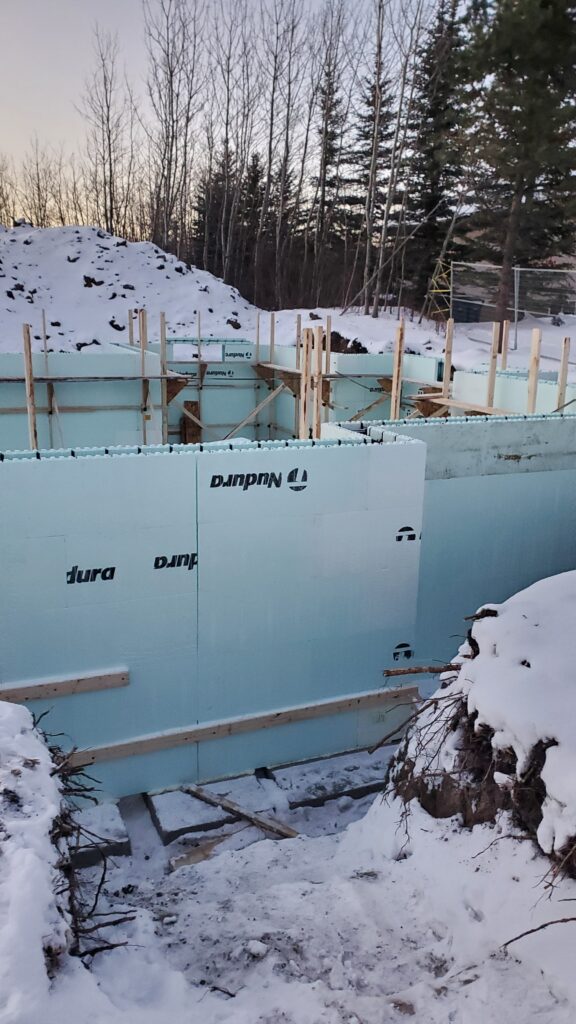Building with Insulated Concrete Forms (ICF) is a popular choice in Edmonton for its energy efficiency and structural strength. However, as with any construction method, there are unique challenges to consider. In this blog post, we’ll explore the common occurrence of vertical seams in ICF foundations and the importance of meticulous alignment.
Understanding Vertical Seams:
Vertical seams are a natural part of the ICF construction process. These seams occur where the forms meet, forming a vertical line that runs along the foundation. While this is a standard aspect of ICF construction, it requires careful attention to detail to maintain alignment.
The Challenge:
The challenge with vertical seams lies in keeping both sides of the seam perfectly aligned. Any deviation from alignment can lead to issues such as uneven walls, compromised structural integrity, and difficulties during the finishing stages of construction.
Expert Tips for Alignment:
String Lines and Layout: Before the concrete is poured, establish a precise layout using string lines. This will serve as a visual guide for ensuring that both sides of the vertical seam align accurately.
Use of Spacers: Employ spacers designed for ICF construction to maintain consistent alignment along the entire length of the seam. Spacers act as guides, preventing any inward or outward movement during the concrete placement.
Continuous Monitoring: Throughout the pouring process, continuously monitor the alignment of the vertical seam. Regular checks will help catch any deviations early, allowing for immediate adjustments.
Adjustment Techniques: In cases where misalignment occurs, be prepared with techniques to make adjustments. This may involve gently tapping the forms back into place or using specialized tools to correct minor deviations.
The Significance of Alignment:
Structural Integrity: Maintaining alignment is crucial for the structural integrity of the foundation. A well-aligned vertical seam ensures that the load is distributed evenly, preventing potential weaknesses in the structure.
Aesthetic Appeal: Beyond structural considerations, alignment significantly impacts the aesthetic appeal of the finished foundation. Even, aligned seams contribute to a polished and professional appearance.
Smoother Finishing Process: An accurately aligned vertical seam facilitates a smoother finishing process. Whether applying exterior finishes or working on the interior, aligned seams make the construction and finishing stages more efficient.
Conclusion:
Navigating common vertical seams in ICF foundations requires a commitment to precision and attention to detail. By employing expert techniques, such as using spacers, string lines, and continuous monitoring, you can ensure that both sides of the seam stay perfectly aligned.
For homeowners in Edmonton considering ICF for their foundation, understanding and addressing vertical seams is a key aspect of a successful construction project. If you have any questions or need guidance on ICF construction, contact us to ensure a smooth and aligned building experience.
